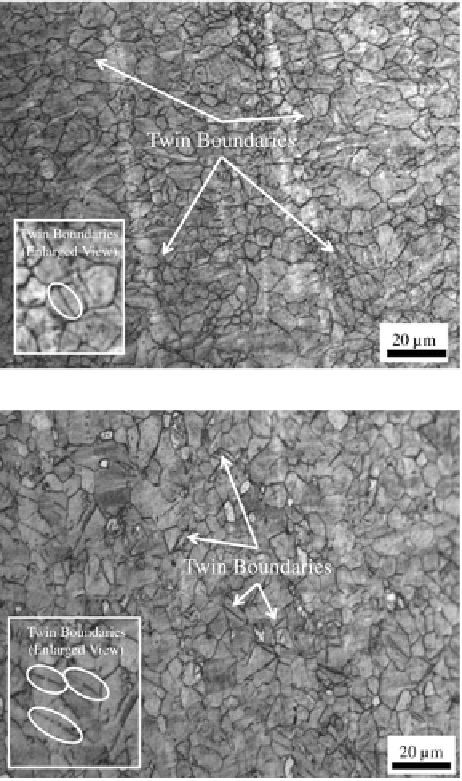Civil Engineering Reference
In-Depth Information
Fig. 8.21
Microstructure
of room temperature
deformation (sample 2) in
orientation 1 at L1
Fig. 8.22
Microstructure
of room temperature
deformation (sample 2) in
orientation 2 at L1
For orientation 2, it is noted that the grain shape is more changed, which is
represented by the jagged appearance of the grains and the grains being less equi-
axed. Also, since this orientation is in line with the direction of loading, there is
a significantly greater amount of twin boundaries present. A few of the bounda-
ries are shown in the figure for reference. The average grain size of the room tem-
perature deformation microstructure in orientation 2 is 6.15 µm with a standard
deviation of 2.33 µm. Again, statistically, these values are equivalent in terms of
equivalent grain size and variance to the as-received material. This can physically
be explained by the grains still having the same area after deformation.
Overall, the microstructure of the room temperature deformation sample shows
a less equiaxed grain structure with a significant amount of twinning. The presence
of twinning is due to the limited number of slip systems active at room tempera-
ture for this material.

